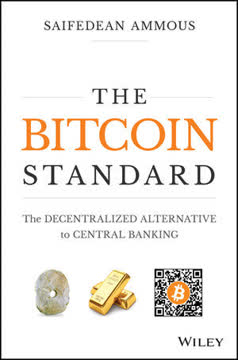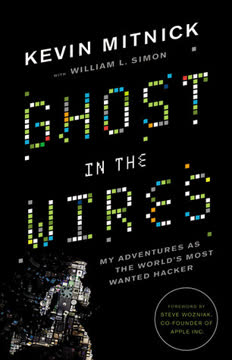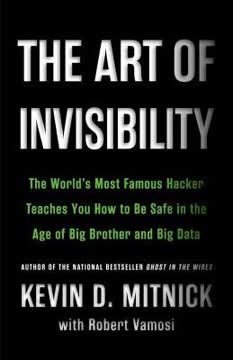重点摘要
1. 社会工程利用人类心理来破坏安全
“安全不是一种产品,而是一个过程。”此外,安全不是一个技术问题,而是一个人和管理的问题。
人类脆弱性。 社会工程攻击针对任何安全系统中最薄弱的环节:人类。与技术漏洞不同,人类的弱点无法通过补丁或更新来修复。社会工程师利用人类的自然倾向,如乐于助人、倾向于信任以及害怕惹麻烦。
心理操纵。 这些攻击依赖于影响和欺骗人,而不是直接黑入系统。常见的策略包括:
- 冒充权威人物
- 制造紧迫感或危机感
- 迎合虚荣心或贪婪
- 利用人类希望被喜欢或欣赏的愿望
通过理解和利用这些心理原则,社会工程师可以绕过最复杂的技术防御。
2. 信任是成功社会工程攻击的基础
“一旦他获得了你的信任,吊桥就会放下,城堡的大门就会打开,他可以进入并获取他想要的任何信息。”
建立关系。 社会工程师擅长迅速与目标建立信任和关系。他们经常使用的技巧包括:
- 提及已知的员工或高管
- 展示对公司程序或术语的内部知识
- 表达共同的兴趣或经历
- 提供小的帮助或协助以创造一种互惠感
利用已建立的信任。 一旦建立了信任,攻击者可以更容易地:
- 请求敏感信息
- 获得对限制区域的物理访问
- 说服目标采取危害安全的行动
最危险的社会工程师是那些能够在长时间内保持令人信服的行为,逐渐增加他们在组织内的信任和访问权限。
3. 信息收集对于制作可信的借口至关重要
“细致的研究是我自己的谨慎品牌,这样我可以与任何质疑我的人交谈,拥有与任何员工一样多的知识。”
侦察阶段。 在发起攻击之前,社会工程师会对目标组织和个人进行彻底的研究。这可能包括:
- 研究公司网站、年度报告和新闻稿
- 检查公开的数据库和社交媒体资料
- 翻找丢弃的文件
- 进行无害的电话以从员工那里收集信息
建立知识库。 收集的信息使攻击者能够:
- 了解组织的结构和文化
- 识别潜在目标及其角色
- 学习公司特定的术语和程序
- 制作可信的场景和借口进行攻击
攻击者的知识越详细和准确,他们的冒充就越可信,成功的机会也就越高。
4. 借口:创造情景以操纵目标的艺术
“一个好的社会工程师,永远不会低估他的对手。”
制作角色。 借口涉及创建一个虚构的情景并扮演一个角色来操纵目标。有效的借口通常包括:
- 冒充权威人物(如IT支持、高管、供应商)
- 制造紧急或时间敏感的情况
- 提供目标想要或需要的东西
适应性是关键。 熟练的社会工程师可以:
- 根据目标的反应迅速调整他们的借口
- 准备多个备用情景
- 即兴编造令人信服的细节
最成功的借口是那些看起来完全合理并符合目标在其组织角色中的期望和经验的借口。
5. 定制策略:利用特定的人类倾向
“人们不会太在意他们在家里丢弃的东西:电话账单、信用卡对账单、药品瓶、银行对账单、工作相关材料等等。”
心理触发。 社会工程师使用各种策略来利用特定的人类倾向:
- 权威:冒充权力人物以迫使服从
- 喜好:建立关系以使目标更易接受
- 互惠:提供帮助以创造一种义务感
- 一致性:利用人们希望与其承诺保持一致的愿望
- 社会证明:利用同伴压力或他人的行为来影响行为
- 稀缺性:制造紧迫感或有限的可用性
针对脆弱性。 攻击者通常集中在:
- 不熟悉安全程序的新员工
- 渴望取悦或害怕权威的低级员工
- 被训练成乐于助人的IT支持人员
- 处于压力或时间紧迫的员工
通过将他们的方法定制到目标的特定心理脆弱性,社会工程师显著增加了成功的机会。
6. 物理安全与数字防御同样重要
“翻垃圾是指通过翻找目标的垃圾来寻找有价值的信息。你可以从目标那里学到的信息量是惊人的。”
超越数字。 尽管网络安全受到很多关注,物理安全仍然是一个关键的脆弱点。社会工程师通过以下方式利用弱物理安全:
- 尾随:跟随授权人员进入限制区域
- 冒充:使用假徽章或伪装进入
- 翻垃圾:通过丢弃的文件寻找敏感信息
整体方法。 综合安全必须解决:
- 访问控制系统和程序
- 员工对物理安全的意识和培训
- 安全的文件和媒体处理实践
- 访客管理和陪同政策
组织必须认识到,物理安全的漏洞很容易导致数字系统和敏感信息的泄露。
7. 员工培训和意识是最好的对策
“员工必须看到高级管理层对该计划的全力支持。这种承诺必须是真实的,而不仅仅是一个盖章的‘我们给予祝福’的备忘录。”
持续教育。 有效防御社会工程需要:
- 定期为所有员工进行安全意识培训
- 模拟社会工程攻击以测试和加强培训
- 清晰传达安全政策和程序
- 培养安全意识文化
赋予员工权力。 培训应侧重于:
- 识别常见的社会工程策略
- 了解他们处理的信息的价值
- 知道验证身份和授权的正确程序
- 对报告可疑活动充满信心
目标是将员工从潜在的脆弱点转变为对抗社会工程攻击的积极和警觉的第一道防线。
8. 验证程序对于阻止社会工程师至关重要
“验证,验证,再验证。任何非当面提出的请求都不应在未经验证请求者身份的情况下被接受——绝对不行。”
多步骤验证。 强有力的验证程序应包括:
- 回拨程序以使用已知的联系号码确认请求
- 对敏感系统或信息访问进行多因素认证
- 建立验证请求者身份和权限的协议
- 定期审计和更新验证程序
一致性至关重要。 组织必须:
- 确保所有员工理解并遵循验证程序
- 一致地应用程序,不论请求的权威或紧迫性如何
- 创建一种文化,使遵循正确的验证程序受到赞扬,而不是被视为不便
有效的验证程序为社会工程师设置了显著的障碍,迫使他们克服多个检查点并增加被发现的风险。
9. 安全政策必须全面且一致执行
“起草和分发安全政策是减少风险的基本步骤,但在大多数情况下,合规性必然由个别员工负责。”
政策框架。 有效的安全政策应涵盖:
- 数据分类和处理程序
- 访问控制和认证要求
- 事件报告和响应协议
- 物理安全和访客管理
- 公司资源的可接受使用
- 社交媒体和外部沟通指南
实施和执行。 为了有效,政策必须:
- 清晰传达并易于所有员工访问
- 定期更新以应对新威胁和技术
- 在组织的所有层级一致执行
- 在可能的情况下由技术控制支持(如密码复杂性要求)
设计良好且正确实施的安全政策创建了一个指导员工行为的框架,并减少了社会工程师的攻击面。
10. 在安全与生产力之间找到平衡是一个持续的挑战
“企业安全是一个平衡的问题。安全措施太少会使公司容易受到攻击,但过度强调安全会妨碍业务,阻碍公司的发展和繁荣。”
找到平衡。 组织必须在以下方面找到平衡:
- 实施强有力的安全措施
- 保持运营效率和员工生产力
- 培养积极和信任的工作环境
适应性方法。 实现这一平衡需要:
- 定期风险评估以识别关键资产和脆弱点
- 根据特定角色和部门定制安全措施
- 实施尽量减少对工作流程干扰的安全控制
- 收集员工对安全措施影响的反馈
- 根据实际效果不断完善政策和程序
目标是创建一种安全态势,既能保护组织的资产,又不会过度妨碍其开展业务和创新的能力。
最后更新日期:
FAQ
What's The Art of Deception about?
- Focus on Social Engineering: The book explores how social engineers manipulate individuals to obtain confidential information, emphasizing psychological tactics over technical hacking.
- Real-Life Examples: Kevin Mitnick shares anecdotes and case studies that demonstrate the methods used by social engineers, making the content engaging and relatable.
- Preventive Measures: It provides practical advice on protecting oneself and organizations from social engineering attacks, highlighting the importance of the human element in security.
Why should I read The Art of Deception?
- Understanding Vulnerabilities: The book helps readers recognize psychological tactics used by social engineers, crucial for anyone in security, IT, or management.
- Practical Guidance: Offers actionable strategies and policies to safeguard sensitive information, making it a valuable resource for individuals and organizations.
- Engaging Narrative: Mitnick’s storytelling makes complex security concepts accessible, with real-life scenarios that educate and engage readers.
What are the key takeaways of The Art of Deception?
- Human Factor is Weakest Link: Emphasizes that the human element is often the most vulnerable aspect of security systems, regardless of technological advancements.
- Social Engineering Techniques: Details tactics like pretexting, baiting, and reverse social engineering, essential for understanding and preventing attacks.
- Importance of Training: Highlights the need for continuous education and training to foster a culture of vigilance against social engineering attacks.
What is the definition of social engineering in The Art of Deception?
- Manipulation for Information: Defined as using influence and persuasion to deceive individuals into revealing confidential information, often by exploiting trust.
- Exploitation of Trust: Relies heavily on exploiting trust and human emotions, making it a powerful tool for attackers.
- Non-Technical Approach: Targets the human element rather than technical vulnerabilities, presenting a unique and often overlooked threat.
What are some social engineering techniques discussed in The Art of Deception?
- Pretexting: Involves creating a fabricated scenario to obtain information, such as posing as a tech support employee.
- Baiting: Entices victims with promises of something desirable to lure them into providing personal information or downloading malicious software.
- Reverse Social Engineering: The attacker creates a problem that the victim needs help with, increasing the likelihood of compliance with requests for sensitive information.
How does The Art of Deception relate to current cybersecurity threats?
- Relevance of Social Engineering: Techniques remain highly relevant as social engineering continues to be a primary method for cybercriminals.
- Evolving Threat Landscape: Provides insights into how attackers adapt strategies to exploit new vulnerabilities in technology and human behavior.
- Importance of Awareness: Underscores the need for ongoing employee training and awareness, as many threats rely on manipulating human behavior.
How can organizations prevent social engineering attacks as suggested in The Art of Deception?
- Employee Training: Regular training programs to educate employees about social engineering tactics and recognition are crucial.
- Strict Verification Procedures: Establish protocols for verifying the identity of anyone requesting sensitive information, using methods like callback verification.
- Data Disposal Policies: Implement strict policies for disposing of sensitive information to prevent attackers from retrieving valuable data from discarded materials.
What are some examples of social engineering attacks from The Art of Deception?
- Bank Heist Example: Stanley Mark Rifkin stole $10 million by memorizing a security code and impersonating a bank official, showcasing deception's effectiveness.
- Phishing Scams: Discusses phishing attacks where emails appear legitimate, tricking victims into providing sensitive information.
- Corporate Espionage: Stories of individuals infiltrating companies by posing as employees, illustrating the ease of exploiting organizational weaknesses.
What is the significance of the human element in security as discussed in The Art of Deception?
- Vulnerability to Manipulation: Humans are often the most vulnerable part of any security system, easily manipulated through trust and emotional appeals.
- False Sense of Security: Over-reliance on technology can create a false sense of safety, as the human element can bypass defenses if not vigilant.
- Need for a Security Culture: Emphasizes fostering a culture of security within organizations, encouraging caution and proactive protection of sensitive information.
What are some common social engineering methods discussed in The Art of Deception?
- Pretexting: Creating a fabricated scenario to obtain information, often by posing as a trusted figure.
- Phishing: Sending fraudulent emails that appear legitimate to trick individuals into revealing personal information.
- Shoulder Surfing: Observing someone entering sensitive information to gain unauthorized access to accounts or systems.
How does Mitnick suggest organizations can prevent social engineering attacks?
- Implement Security Policies: Establish clear policies outlining procedures for verifying identities and handling sensitive information.
- Conduct Regular Training: Continuous training programs to educate employees about social engineering tactics and security awareness.
- Encourage Reporting: Foster an environment where employees are encouraged to report suspicious activities or requests.
What are the best quotes from The Art of Deception and what do they mean?
- “Security is not a product, it's a process.”: Emphasizes that effective security requires ongoing effort and vigilance, not just reliance on technology.
- “The human factor is truly security's weakest link.”: Highlights that sophisticated security measures can be undermined by human error or manipulation.
- “Your trash may be your enemy's treasure.”: Reminds that discarded information can be exploited, stressing the need for proper disposal methods.
评论
《欺骗的艺术》获得了褒贬不一的评价,有人称赞其对社会工程学和网络安全漏洞的深入见解。读者们欣赏米特尼克提供的真实案例和实用建议,尽管有些人认为内容重复且过时。这本书因提高对人类安全风险的认识并提供减轻这些风险的策略而受到重视。批评者指出其侧重于企业环境且偶尔带有居高临下的语气。尽管年代久远,许多读者仍然认为其核心概念具有相关性和启发性,推荐其作为社会工程学策略的入门读物。
Similar Books

















